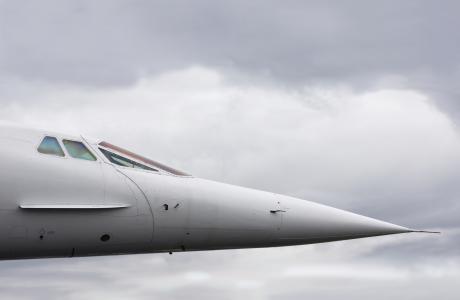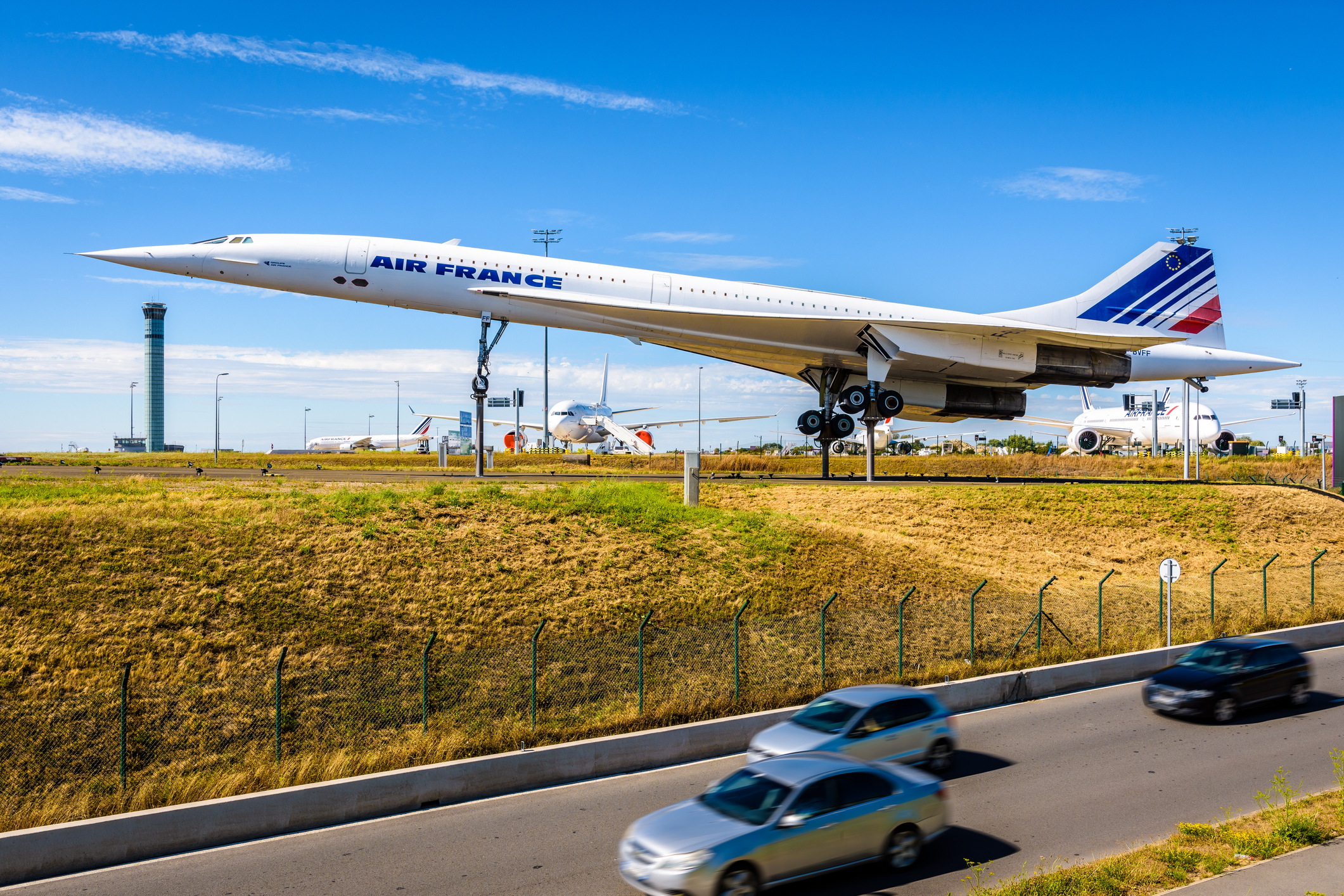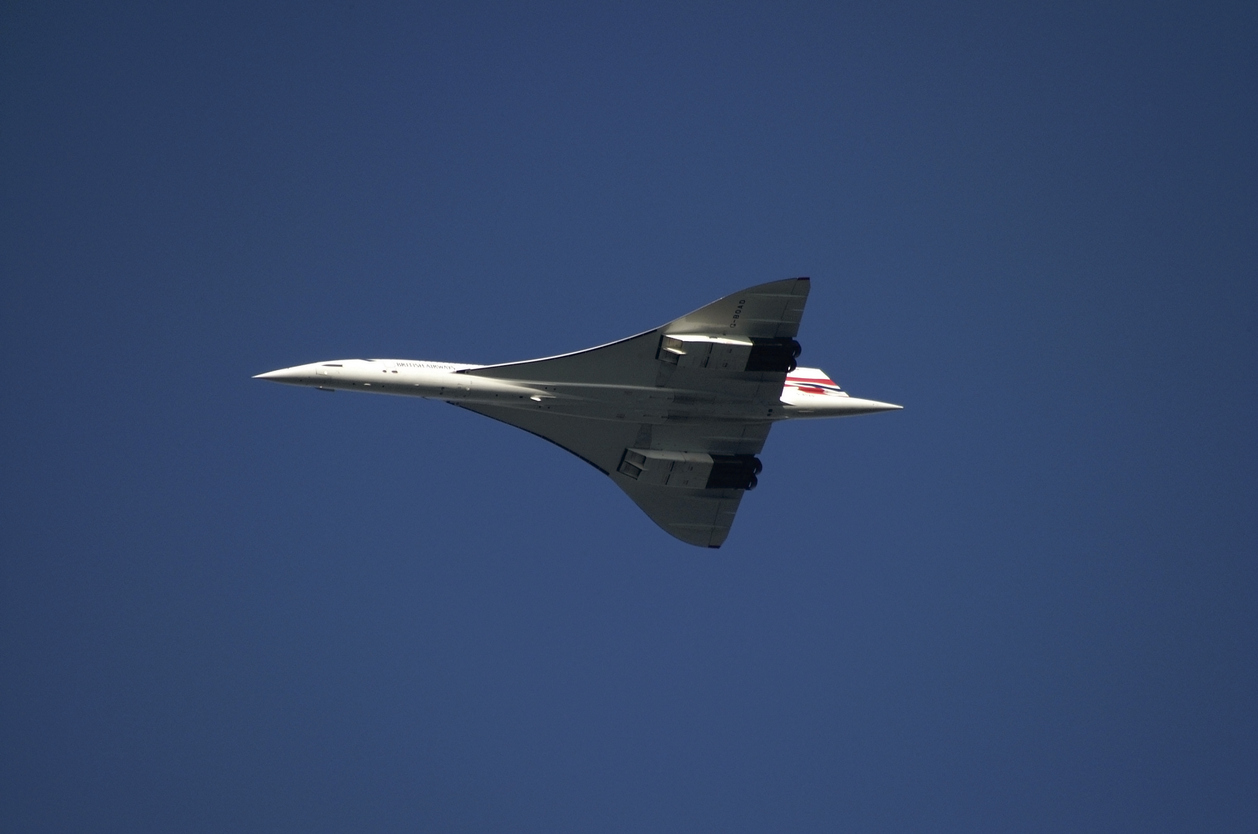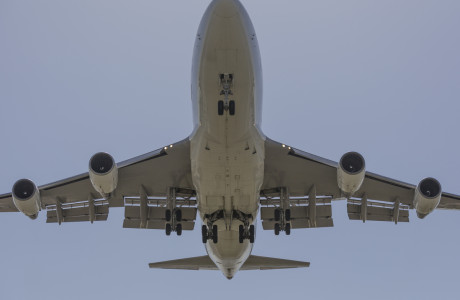
History & Future of Supersonic Aircraft: From Concorde to Boom Overture
Since Concorde's flight operations were discontinued 20 years ago, no supersonic aircraft have been used for passenger transportation. But this could change in the not too distant future: The US company Boom Technologies is developing the Book Overture project, a supersonic aircraft that should be available as a scheduled passenger aircraft towards the end of the 2020s. There could soon be a successor to Concorde. But was Concorde the only supersonic passenger aircraft ever built? What is the status of the development of the Boom Overture? And are there other supersonic aircraft projects in development besides this one? You can find the answers here.
Contents
Supersonic Passenger Aircraft
Even though Concorde was the best-known supersonic passenger airliner, it was not the first. The Tupolev Tu-144, a commercial passenger aircraft, had its first supersonic flight on June 5, 1969 - four months before Concorde. However, it only carried out 55 commercial passenger flights, the last of which took place in 1978. Technical difficulties, but above all cost factors, played a role in the discontinuation of the Tu-144 due to the special requirements that supersonic aircraft have to meet.

Even more than normal aircraft, supersonic airplanes are exposed to high loads. Due to the high speed, temperatures of over 300°C can occur on some aircraft parts. Materials normally used in aircraft construction cannot withstand these temperatures. For aerodynamic reasons, the shape of supersonic aircraft is also quite clearly defined. The long, narrow fuselage of the Concorde is just as similar to the Tu-144 as it is to various military aircraft. However, it offers comparatively little space for passengers, which is why the costs per seat for airlines increase additionally.
The Concorde: History & Facts
The first plans and designs for supersonic passenger aircraft were drawn up in the early 1950s, when the first military aircraft began to break the sound barrier. After lengthy planning phases, initially on the British side, but then also on the French side, cooperation between the two countries on the Concorde began towards the end of the decade. The aircraft was already capable of supersonic flight without the use of afterburners from the moment it entered service and was therefore technically superior to the Tu-144. Concorde flights from Paris to New York took just under 3.5 hours, less than half as long as with conventional aircraft.
Why was Concorde discontinued?
The fact that the prestigious Concorde project was ultimately discontinued despite its various advantages had several reasons, primarily economic ones. And the reputation of the means of transportation was also significantly tarnished over time.
Duration of development
The development of the Concorde took much longer than expected and cost at least 1.5 billion pounds instead of the originally announced 70 million pounds. This resulted in a significantly smaller fleet than expected. The costs per aircraft could not be recouped.
Operating costs
The Concorde also proved to be more expensive to operate than other aircraft. Although a profit was made over the years, the margins proved to be more promising in other areas over time.
Ticket prices
Due to the low number of seats and high operating costs, Concorde's ticket prices were significantly higher than normal prices on other aircraft. They were around 10-15% higher than the prices of standard first-class tickets.
Lack of comfort
Concorde had to justify its high prices with speed - apart from that, there was a lack of arguments. There was a lack of space for comfort features such as reclining seats, not to mention the more extravagant offerings that were established in the First Class areas of other aircraft. In these, airlines were able to achieve higher and more reliable profit margins.
Concorde crash in 2000
The crash of a Concorde made a decisive contribution to the discontinuation. The accident in 2000 occurred shortly after take-off in Paris. Although the accident was not due to a fundamental design flaw and was the only crash of a Concorde - making it one of the safest passenger aircraft - it resulted in a significant drop in demand for tickets. As a result, both Air France and British Airlines decided to retire the aircraft, which was still operated primarily for reasons of prestige.

In April 2003, it was announced that Concorde would be permanently withdrawn from service. After an extensive farewell tour, Concorde made its last flight on November 26, 2003.
By the way: Today you can see many of the surviving Concordes in museums, with the Technik Museum Sinsheim being the only one in the world to have both a Concorde and a Tu-144.
New Start For Supersonic: Boom Overture/Boom Supersonic
Boom Overture is the name of a supersonic aircraft under development by the US company Boom Technologies - sometimes also referred to as Boom Supersonic. The status of the project is already quite advanced. The factory for the construction of the Overture aircraft will be completed in 2024 and several airlines have already placed firm orders and/or options. The new supersonic aircraft is scheduled to fly for the first time in 2026, with scheduled operations starting in 2029.
The Boom Overture differs from the Concorde in some respects. It will not quite reach the flight times of the latter, as its announced cruising speed of Mach 1.7 is expected to be lower than the Mach 2.02 achieved by the Concorde. In contrast to the Concorde, however, the Boom Overture is designed to fly entirely on biofuel. Boom Supersonic as a company aims to be completely climate-neutral by 2040. Furthermore, the noise pollution of these supersonic aircraft should not be higher than that of normal airliners. In terms of price, a range similar to Business and First Class in other passenger aircraft is envisaged.
Supersonic Aircraft From NASA?
The fact that supersonic aircraft can still look futuristic today, or can do so again, is demonstrated by NASA's involvement. Together with several American aircraft manufacturers, including Boeing and Lockheed, NASA is developing various prototypes for supersonic aircraft. The focus here is on noise reduction on the one hand, but also on speeds of up to Mach 4. Corresponding passenger planes would cover the distance from one of New York's airports to one of London's airports in just 1.5 hours.
Even if you can't board a supersonic aircraft as a passenger at the moment, the wait for Concorde's successor could soon be over. We therefore already wish you a pleasant and particularly fast flight!



